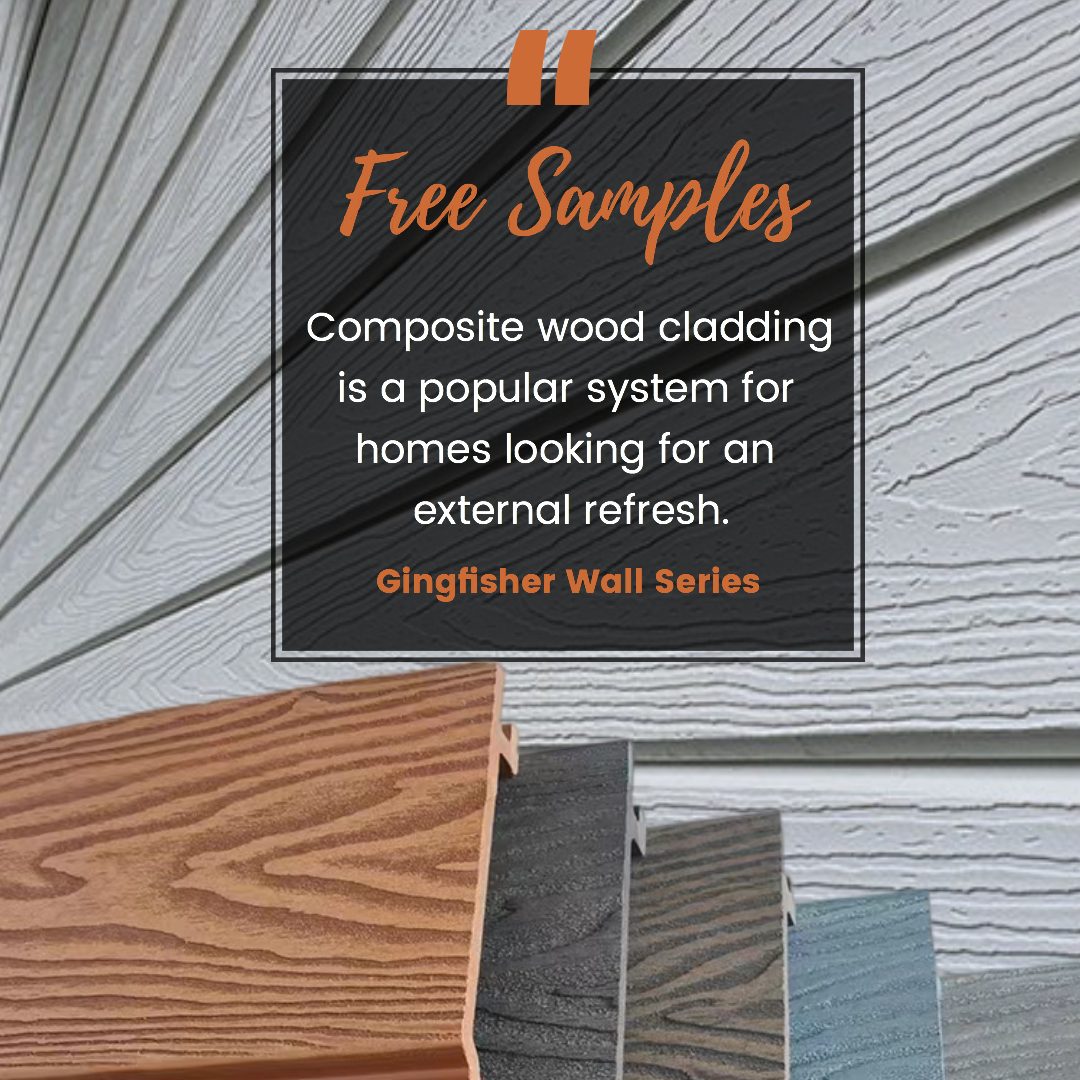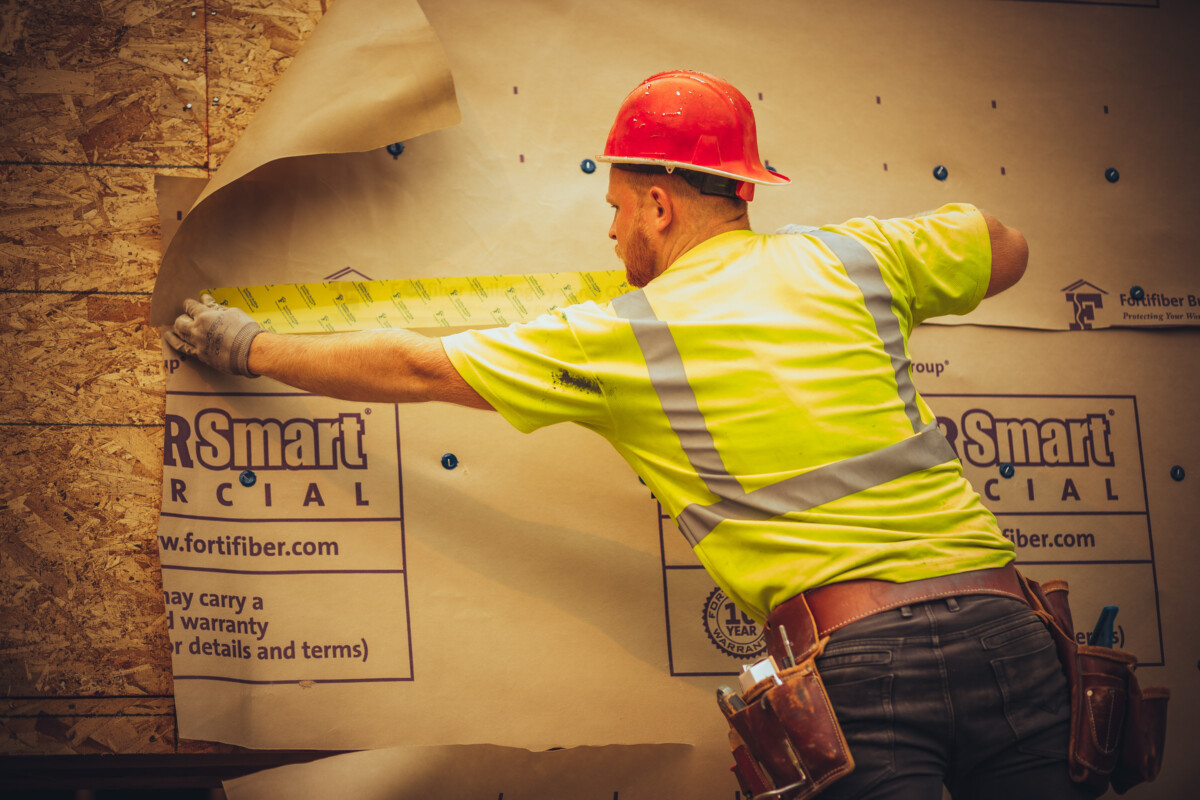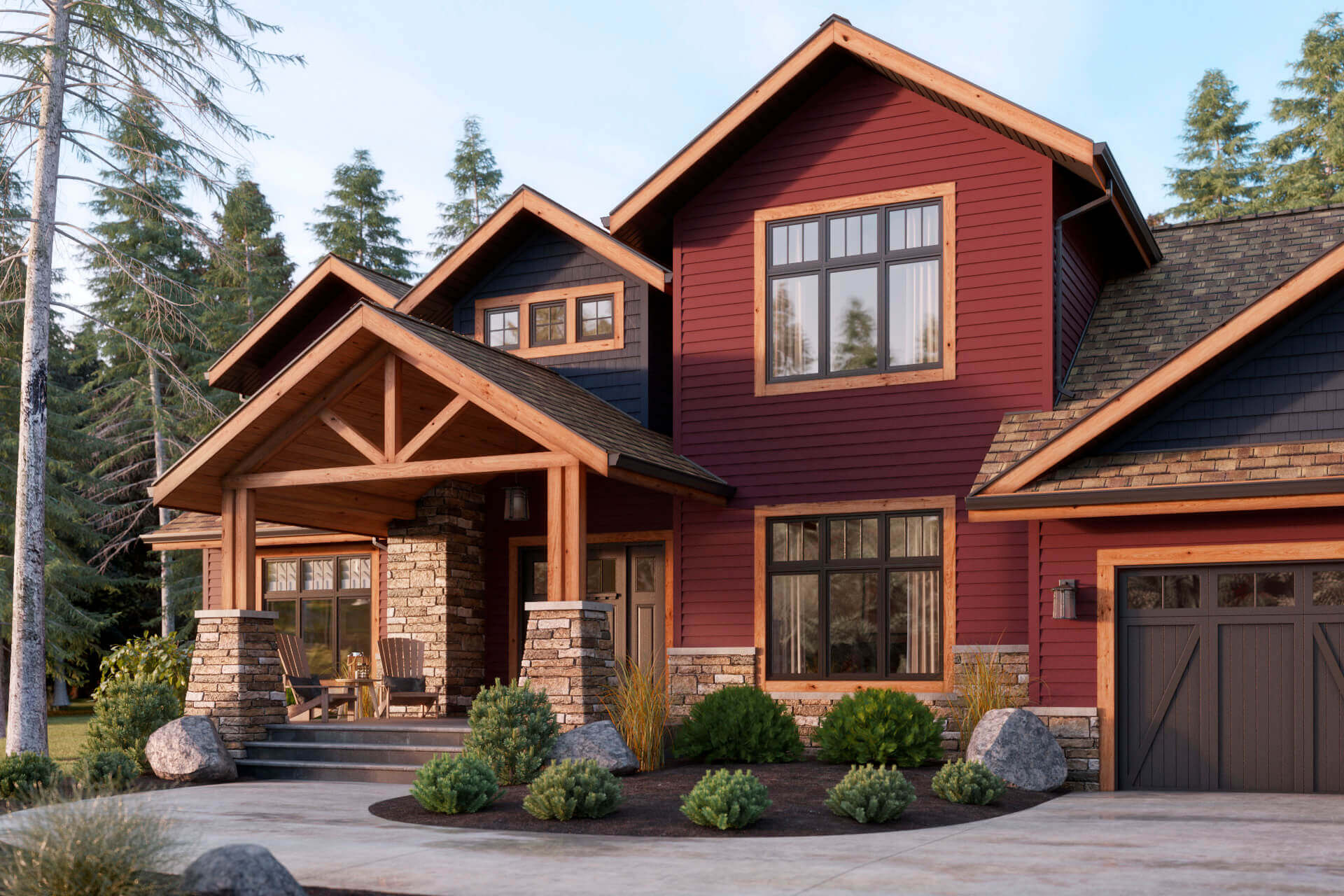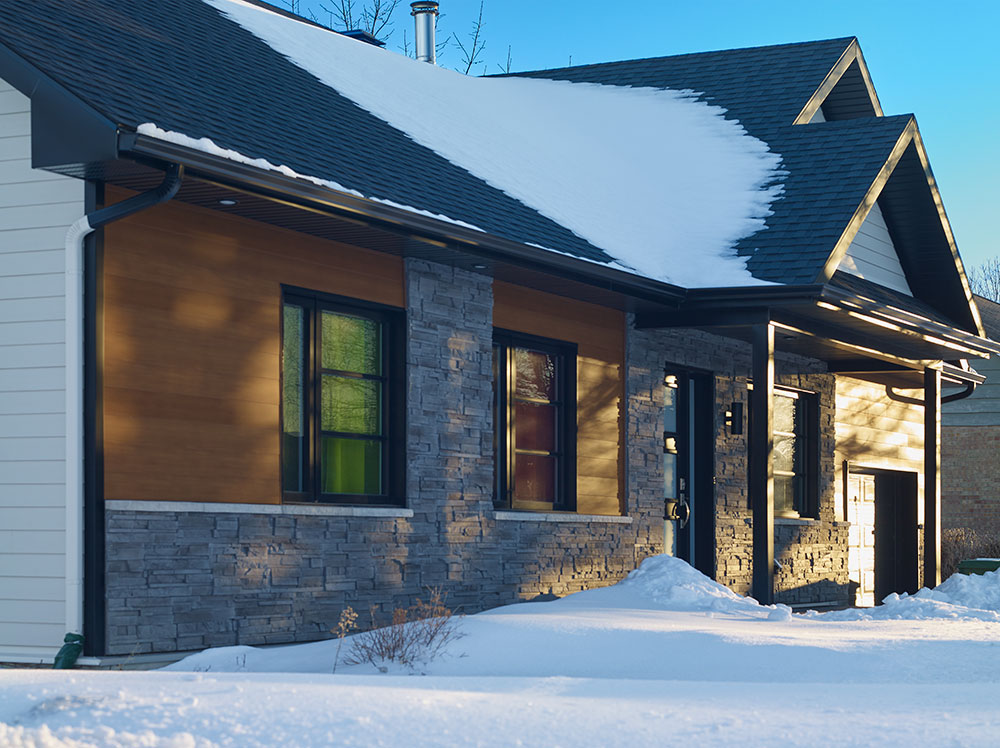Choosing the Best Home Siding: Expert Tips
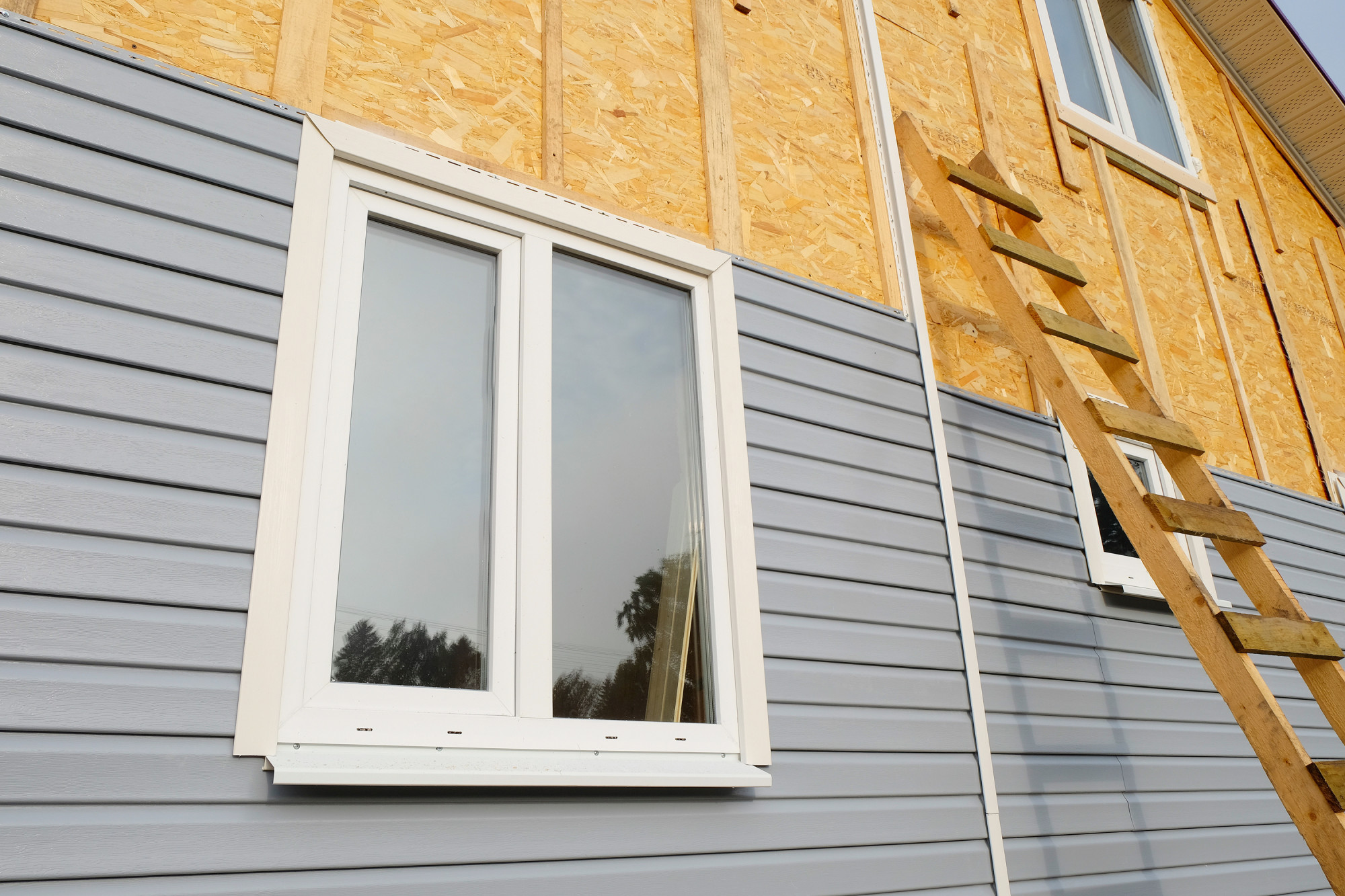
How to Choose the Best Siding for Your Home: Expert Tips – Selecting the right siding for your home is a crucial decision impacting both aesthetics and longevity. This guide explores various siding materials, from classic wood to modern metal, highlighting their pros, cons, and suitability for different climates and budgets. We’ll delve into factors like cost, maintenance, durability, and environmental impact to help you make an informed choice that enhances your home’s value and curb appeal for years to come.
This comprehensive guide will equip you with the knowledge to navigate the world of siding options, considering factors like your home’s architectural style, local climate, and personal preferences. We’ll compare the cost-effectiveness of different materials, analyze their long-term maintenance requirements, and discuss the importance of professional installation versus DIY projects. By the end, you’ll be confident in selecting the best siding to protect and beautify your home.
Introduction to Siding Choices
Choosing the right siding for your home is a crucial decision impacting both its aesthetic appeal and long-term durability. The market offers a diverse range of materials, each with its own set of advantages and disadvantages. Understanding these differences is key to making an informed choice that aligns with your budget, style preferences, and the climate in your region.
Selecting siding involves careful consideration of several factors. The initial cost is just one piece of the puzzle; you also need to account for the long-term maintenance requirements and the overall lifespan of the material. Finally, the aesthetic impact of the siding on your home’s curb appeal and its compatibility with your architectural style should be carefully evaluated.
Siding Material Overview
Several common siding materials are available, each offering a unique blend of features. Vinyl siding is popular for its affordability and low maintenance. Wood siding provides a classic, natural look but requires more upkeep. Fiber cement siding offers durability and fire resistance, while metal siding is known for its longevity and weather resistance. Other options include brick, stone, and stucco, each with its own set of properties and associated costs.
Key Factors in Siding Selection
Before making a decision, homeowners should carefully weigh three primary factors: cost, maintenance, and durability. The initial purchase price varies significantly across materials. Maintenance needs, such as repainting or cleaning, also differ considerably. Finally, the lifespan of the siding – how long it will last before needing replacement – is a critical factor impacting the overall cost of ownership. Understanding the trade-offs between these three factors will guide you toward the best choice for your home.
Initial Cost Comparison of Siding Materials
The following table provides a general comparison of the initial cost of different siding materials. Note that these are estimates and actual costs can vary depending on factors such as labor costs, location, and material quality.
| Siding Type | Initial Cost per Square Foot (USD) | Notes |
|---|---|---|
| Vinyl | $3-$8 | Relatively inexpensive, widely available. |
| Wood | $10-$25 | Cost varies greatly depending on wood type and quality. |
| Fiber Cement | $8-$15 | More expensive than vinyl, but offers greater durability. |
| Metal | $10-$20 | Cost can vary widely based on the type of metal used (e.g., aluminum, steel). |
Vinyl Siding
Vinyl siding has become a popular choice for homeowners due to its affordability and relatively low maintenance requirements. It offers a durable and aesthetically pleasing exterior solution, though it’s crucial to understand both its advantages and limitations before making a decision.
Vinyl siding’s primary appeal lies in its cost-effectiveness. Generally less expensive than other siding materials like wood, brick, or fiber cement, it can significantly reduce upfront construction costs. This makes it an attractive option for budget-conscious homeowners or those undertaking large-scale renovations. Furthermore, vinyl siding requires minimal maintenance. Unlike wood siding, which needs regular painting and staining to prevent rot and insect damage, vinyl is resistant to these issues. Simple cleaning with a hose and occasional scrubbing can keep it looking its best for years. This translates to long-term cost savings on maintenance and repairs.
Durability and Aesthetic Considerations of Vinyl Siding
While vinyl siding offers considerable advantages in terms of cost and maintenance, it does have some drawbacks. One key concern is its durability. Although resistant to rot, insects, and moisture, vinyl siding can be susceptible to damage from impacts, such as hail or strong winds. Severe impacts can cause dents, cracks, or even holes, requiring costly repairs or replacements. The color and finish of vinyl siding can also fade over time due to prolonged sun exposure, particularly in regions with intense UV radiation. This fading can affect the overall aesthetic appeal of the home, necessitating premature replacement in some cases. Additionally, vinyl siding may not offer the same level of aesthetic versatility as other materials. While a wide variety of colors and textures are available, the overall appearance might be perceived as less sophisticated or natural compared to wood or stone. This is a subjective consideration, however, and depends largely on personal preference and architectural style.
Lifespan of Vinyl Siding by Grade
The lifespan of vinyl siding is significantly influenced by its grade and quality. Higher-grade vinyl siding generally utilizes thicker materials and superior manufacturing processes, resulting in increased durability and longevity. Lower-grade vinyl siding may be more prone to damage and fading, leading to a shorter lifespan.
The following provides a general estimate of the lifespan for different grades of vinyl siding. These are estimates and can vary depending on factors such as climate, installation quality, and maintenance.
- Low-Grade Vinyl Siding: 10-15 years. This grade often exhibits thinner profiles and less UV protection, making it more susceptible to damage and fading.
- Mid-Grade Vinyl Siding: 20-25 years. Mid-grade vinyl typically incorporates thicker materials and enhanced UV resistance, leading to a longer lifespan.
- High-Grade Vinyl Siding: 30-40 years or more. High-grade vinyl siding often includes features such as impact resistance and advanced UV protection, maximizing durability and extending its service life. These higher grades usually come with a longer warranty.
Wood Siding
Wood siding offers a timeless appeal, bringing warmth and natural beauty to any home. Its versatility allows it to complement a wide range of architectural styles, from rustic cabins to elegant Victorian homes. The natural grain and texture of the wood create a visually rich surface that is unmatched by other siding materials.
Wood siding’s aesthetic appeal is heavily influenced by the type of wood used and the chosen finish. The inherent variations in color and grain pattern contribute to a unique and visually interesting exterior. For instance, the rich reddish-brown tones of redwood contrast beautifully with the lighter, more subtle grains of cedar. Proper installation and finishing techniques are crucial to maximizing the aesthetic impact of wood siding.
Wood Siding Maintenance
Maintaining wood siding involves regular cleaning, painting, and sealing to protect it from the elements and prolong its lifespan. Neglecting these tasks can lead to premature deterioration, including rot, insect infestation, and damage from moisture. A regular cleaning schedule, typically once or twice a year, removes dirt, debris, and mildew, preventing these issues from taking hold.
Painting and sealing are crucial steps in protecting wood siding. A high-quality exterior paint acts as a barrier against moisture, UV radiation, and insect damage. Sealing the wood before painting helps to prevent moisture absorption, further enhancing its longevity. The frequency of repainting and resealing depends on factors such as the type of wood, the climate, and the quality of the paint and sealant used. Regular inspections for any signs of damage, such as cracks or rot, are also essential for proactive maintenance.
Common Wood Types for Siding
Several wood types are commonly used for siding, each possessing unique properties that influence their suitability for different climates and aesthetic preferences.
Cedar, known for its natural resistance to decay and insects, is a popular choice for siding. Its lightweight nature makes it relatively easy to install, while its aromatic scent adds a pleasant touch. Cedar’s durability and attractive grain make it a premium option, though it’s generally more expensive than other wood types.
Redwood, another naturally durable wood, is prized for its rich reddish-brown hue and exceptional resistance to rot and insect damage. Its strength and stability make it ideal for areas with harsh weather conditions. Like cedar, redwood is a higher-end option due to its durability and aesthetic qualities.
Other wood types, such as pine and fir, are also used for siding, though they may require more frequent maintenance due to their lower natural resistance to decay. These woods are often treated with preservatives to enhance their durability and lifespan. The choice of wood type should be based on factors such as budget, desired aesthetic, and local climate conditions.
Fiber Cement Siding
Fiber cement siding offers a compelling blend of durability and aesthetic appeal, making it a strong contender for homeowners seeking a long-lasting and attractive exterior. Its composition, a mixture of cement, cellulose fibers, and other additives, results in a remarkably robust material capable of withstanding the harshest weather conditions.
Fiber cement siding boasts superior durability compared to many other siding options. Its inherent strength makes it highly resistant to damage from impacts, such as hail or flying debris. Unlike vinyl, it won’t dent or crack easily, and it’s less susceptible to warping or fading from prolonged sun exposure. Furthermore, its fire-resistant properties provide an added layer of safety for your home, significantly reducing the risk of fire spread. This inherent resistance to fire is a major advantage over wood or vinyl siding.
Fiber Cement Siding Cost and Long-Term Value
While fiber cement siding offers significant advantages in terms of durability and longevity, it does come with a higher initial cost than vinyl or some other siding materials. This higher upfront investment can be a deterrent for some homeowners, but a closer examination of long-term costs reveals a different picture. The superior lifespan and reduced maintenance needs of fiber cement siding often translate to significant savings over the life of your home.
| Feature | Vinyl Siding | Fiber Cement Siding | Notes |
|---|---|---|---|
| Initial Cost | $3-$8 per square foot | $8-$15 per square foot | Prices vary based on style, quality, and installation. |
| Lifespan | 15-30 years | 50-80 years | Fiber cement’s longevity significantly reduces replacement costs. |
| Maintenance | Moderate (occasional cleaning, potential repairs) | Minimal (occasional cleaning) | Less maintenance translates to lower long-term costs. |
| Repair Costs | Can be relatively inexpensive for minor repairs, but major repairs can be costly. | Generally higher repair costs per incident, but less frequent. | Repair frequency is significantly lower for fiber cement. |
| Long-Term Cost (Example) | Assuming a 20-year lifespan and $5/sq ft initial cost, plus $1000 in maintenance/repairs over 20 years, total cost = $11,000 per 100 sq ft. | Assuming a 60-year lifespan and $12/sq ft initial cost, plus $500 in maintenance/repairs over 60 years, total cost = $7,500 per 100 sq ft. | This example illustrates how fiber cement’s longer lifespan and lower maintenance can lead to lower overall cost. Actual costs will vary depending on numerous factors. |
Metal Siding
Metal siding offers a compelling blend of modern aesthetics and low-maintenance practicality, making it a popular choice for homeowners seeking a durable and stylish exterior. Its sleek lines and clean finishes contribute to a contemporary look, while its inherent resistance to damage and decay minimizes the need for frequent repairs and upkeep.
Metal siding’s low-maintenance nature stems from its inherent properties. Unlike wood, it doesn’t rot or warp, and unlike vinyl, it resists dents and fading. Regular cleaning with a garden hose usually suffices to keep it looking its best, significantly reducing the time and effort required for exterior maintenance compared to other siding materials.
Types of Metal Siding and Their Properties
Several types of metal are used in siding, each possessing distinct characteristics influencing its performance and cost. Understanding these differences is crucial for making an informed decision.
- Aluminum Siding: Lightweight and relatively inexpensive, aluminum siding is known for its corrosion resistance and ease of installation. However, it can dent more easily than steel and may not offer the same level of insulation.
- Steel Siding: Stronger and more dent-resistant than aluminum, steel siding provides superior durability and longevity. It’s often coated with zinc or other protective layers to enhance its resistance to rust and corrosion. Steel siding tends to be more expensive than aluminum.
- Zinc Siding: A premium option, zinc siding is highly durable and develops a naturally protective patina over time, enhancing its aesthetic appeal and weather resistance. Its cost is typically higher than aluminum or steel.
Energy Efficiency Benefits of Metal Siding
Metal siding can contribute significantly to a home’s energy efficiency. Its reflective properties help to reduce heat absorption, keeping the interior cooler in summer and potentially lowering cooling costs. Many metal siding options also incorporate insulation features, further enhancing their energy-saving capabilities. For example, a home in a hot climate like Phoenix, Arizona, might see a noticeable decrease in energy bills by using metal siding with insulation compared to traditional wood siding. This reduction in energy consumption translates to both financial savings and a smaller environmental footprint.
Choosing Siding Based on Climate
The climate where your home is located plays a crucial role in determining the longevity and performance of your siding. Extreme weather conditions, such as intense heat, heavy rainfall, and significant snowfall, can significantly impact the lifespan and aesthetic appeal of various siding materials. Selecting the right siding for your climate is essential for protecting your home and ensuring its lasting beauty.
Climate conditions exert considerable influence on siding material selection. Exposure to intense sunlight, freezing temperatures, and moisture can cause certain materials to degrade faster than others. For example, wood siding, while aesthetically pleasing, is susceptible to rot and insect damage in humid climates. Conversely, vinyl siding, while durable in many respects, can become brittle and crack under extreme cold. Understanding these interactions is key to making an informed decision.
Climate Zone Recommendations for Siding Materials
The following table provides recommendations for siding materials based on different climate zones. Remember that these are general guidelines, and specific local conditions should always be considered when making a final decision. Consult with a local siding professional for personalized advice.
| Climate Zone | Recommended Siding | Reasons | Considerations |
|---|---|---|---|
| Hot and Humid (e.g., Southern US) | Fiber Cement, Metal | Resistant to moisture, rot, and insect damage; withstands high temperatures. | Metal can expand and contract significantly with temperature fluctuations, requiring careful installation. |
| Cold and Snowy (e.g., Northern US) | Vinyl, Fiber Cement | Vinyl offers good insulation and is relatively low-maintenance; fiber cement is durable and resists damage from ice and snow. | Vinyl can become brittle in extremely low temperatures; ensure proper installation to prevent moisture penetration in fiber cement. |
| Coastal Areas (High Wind, Salt Spray) | Fiber Cement, Metal, Vinyl (high-quality) | Resistant to moisture damage and salt spray; durable enough to withstand strong winds. | Regular maintenance is crucial to prevent corrosion in metal siding; ensure proper sealing to protect against moisture in vinyl. |
| Arid and Sunny (e.g., Southwestern US) | Stucco, Fiber Cement, Vinyl | Withstands high temperatures and UV exposure; requires less maintenance compared to wood. | Stucco can crack if not properly applied; ensure vinyl siding is UV-resistant. |
Impact of Siding on Home Value
Choosing the right siding not only enhances your home’s aesthetic appeal but also significantly impacts its market value. The material you select can influence curb appeal, contributing to a higher perceived value and potentially a quicker sale. Different siding options offer varying degrees of return on investment, making it crucial to consider the long-term financial implications alongside aesthetic preferences.
The overall effect of siding on home value is multifaceted. High-quality, well-maintained siding projects a sense of care and upkeep, attracting potential buyers and justifying a higher asking price. Conversely, damaged or outdated siding can detract significantly from a home’s value, making it harder to sell and potentially requiring costly repairs before listing. The choice of siding material directly impacts this equation, with some materials offering a better return on investment than others.
Return on Investment for Siding Upgrades
The return on investment (ROI) for siding upgrades varies depending on several factors, including the material chosen, the quality of the installation, and the local real estate market. While precise figures are difficult to generalize, certain materials consistently demonstrate a stronger ROI than others. For instance, fiber cement siding, due to its durability and longevity, often yields a higher return than vinyl siding, although the initial cost is generally higher. A homeowner might recoup 70-80% of the cost of a fiber cement siding upgrade upon resale, while vinyl siding might offer a slightly lower return, around 60-70%. These percentages, however, are estimates and can vary widely based on location and market conditions. A successful remodel in a high-demand area might yield even higher returns, while the same project in a less competitive market may show a lower return.
Factors Influencing Perceived Home Value
A home’s exterior significantly contributes to its perceived value. Several factors, beyond just the siding material, influence a buyer’s perception.
- Siding Condition: Clean, well-maintained siding is crucial. Cracks, fading, and damage significantly reduce perceived value.
- Material Quality: Higher-quality materials, such as premium vinyl or fiber cement, generally command higher resale values than cheaper alternatives.
- Color and Style: The siding’s color and style should complement the home’s architecture and the surrounding neighborhood. Neutral colors often have broader appeal.
- Overall Curb Appeal: Siding is just one element. Landscaping, driveway condition, and the overall neatness of the exterior all contribute to curb appeal and value.
- Neighborhood Context: A high-end siding choice in a modest neighborhood may not yield the same return as in a more affluent area.
Siding Installation
Choosing between professional installation and a DIY approach for your new siding is a significant decision impacting both cost and the final result. Factors such as your skill level, available time, and the complexity of the project should all be carefully considered. Both options present advantages and disadvantages that need careful evaluation.
Professional siding installation offers numerous benefits. Experienced installers possess the necessary expertise, specialized tools, and efficient techniques to ensure a high-quality, long-lasting installation. They are also typically insured, providing protection against potential damage or injury during the process. However, professional installation comes with a higher price tag compared to DIY.
Professional vs. DIY Siding Installation
Hiring a professional siding installer guarantees a superior outcome, minimizing the risk of mistakes that could lead to costly repairs or premature siding failure. Professionals understand building codes and best practices, ensuring the installation meets all necessary standards. They also have access to a wider range of tools and materials, leading to a more efficient and effective installation process. Conversely, a DIY approach can be significantly more affordable, offering a sense of accomplishment and potentially saving a substantial amount of money. However, it requires significant time commitment, a high level of skill, and the potential for errors which can negate any cost savings. A lack of experience can also lead to safety hazards.
Necessary Tools and Skills for DIY Siding Installation
Successful DIY siding installation requires a range of specialized tools and a considerable skill set. Essential tools include a measuring tape, level, circular saw, miter saw, nail gun, caulk gun, safety glasses, and work gloves. Beyond the tools, crucial skills include accurate measuring and cutting, proper nailing techniques to avoid damage to the siding, and understanding of building codes and best practices for weatherproofing. Improper installation can lead to issues such as water damage, warping, and reduced energy efficiency. For example, incorrectly installed flashing around windows and doors can cause significant water leakage, leading to mold and structural damage.
Simple Siding Repair: Replacing a Damaged Panel
Replacing a single damaged siding panel is a manageable DIY project for homeowners with basic handyman skills. The process begins with careful assessment of the damage. First, remove the damaged panel by carefully removing the nails securing it. Then, inspect the underlying sheathing for any damage. If the sheathing is damaged, it must be repaired before installing the new panel. Next, measure the replacement panel to ensure it fits correctly. Finally, install the new panel using appropriate nails or screws, ensuring proper alignment and secure fastening. Remember to caulk around the edges of the new panel to prevent water intrusion. This simple repair can significantly improve the aesthetic appeal and structural integrity of your home’s siding, preventing further damage.
Warranty and Guarantees
Choosing siding is a significant investment, and understanding the warranty associated with your selection is crucial for protecting that investment. A comprehensive warranty provides peace of mind, assuring you of the manufacturer’s confidence in their product and offering recourse should any defects arise. Failing to understand the warranty details can lead to unexpected costs and frustrations down the line.
The warranty outlines the manufacturer’s commitment to the quality and longevity of their siding. It typically specifies the duration of coverage, the types of defects covered, and the procedures for making a claim. Some warranties cover material defects only, while others extend to labor costs associated with repairs or replacements. Carefully reviewing the fine print is essential to fully grasp the extent of the protection offered. Understanding the warranty terms will allow you to make an informed decision based on both the product’s quality and the manufacturer’s commitment to standing behind their work.
Warranty Coverage Details
Warranties vary significantly between manufacturers and even between different product lines within the same manufacturer’s catalog. Some offer limited warranties covering only manufacturing defects for a short period, while others provide extensive, transferable warranties that cover both materials and labor for decades. For instance, a premium vinyl siding manufacturer might offer a 50-year warranty against fading and cracking, whereas a lesser-known brand might only offer a 10-year warranty on material defects. Understanding the nuances of each warranty is crucial to make a well-informed choice. The level of warranty coverage directly reflects the manufacturer’s confidence in the durability and quality of their siding. A longer and more comprehensive warranty often indicates a higher-quality product built to withstand the test of time and environmental stresses.
Questions to Ask Regarding Warranties
Before committing to a specific siding material and installer, it’s essential to clarify all aspects of the warranty. This ensures that you are fully aware of your rights and the extent of protection you are receiving. Clear communication will prevent misunderstandings and potential disputes later on.
- What is the length of the warranty on the materials and workmanship?
- What specific defects are covered under the warranty?
- Are there any exclusions or limitations to the warranty coverage?
- What is the process for filing a warranty claim?
- Is the warranty transferable to a future homeowner?
- What documentation is required to file a warranty claim (e.g., proof of purchase, installation date)?
- Will the manufacturer or installer cover labor costs associated with repairs or replacements under the warranty?
- What is the manufacturer’s process for handling warranty claims (e.g., timeline, dispute resolution)?
- Does the warranty cover damage caused by unforeseen circumstances (e.g., extreme weather events)? If so, to what extent?
Sustainability and Environmental Impact
Choosing siding involves more than just aesthetics and durability; it also has significant environmental implications. The manufacturing process, material lifespan, and eventual disposal of siding all contribute to its overall environmental footprint. Understanding these factors allows for informed decisions that minimize your home’s impact on the planet.
The environmental impact of siding materials varies considerably. Factors such as energy consumption during manufacturing, transportation distances, the use of virgin materials versus recycled content, and the material’s recyclability or biodegradability all play a role. Some materials have a higher embodied carbon footprint than others, meaning they release more greenhouse gases during their production and transportation. Furthermore, the longevity of the siding material impacts its overall environmental impact; a longer-lasting siding material will generally have a smaller environmental footprint over its lifetime compared to one that needs frequent replacement.
Environmental Impact of Different Siding Materials
Manufacturing processes for various siding materials differ significantly in their energy consumption and waste generation. Vinyl siding, for example, is produced from petroleum-based plastics, a non-renewable resource, and its manufacturing process often involves the release of volatile organic compounds (VOCs). Wood siding, while a renewable resource, requires harvesting and processing, which can lead to deforestation and habitat loss if not sustainably sourced. Fiber cement siding, a composite material, uses cement production, a process known for its high carbon emissions. Metal siding, typically made from steel or aluminum, requires significant energy for mining and processing the raw materials. However, the use of recycled materials can reduce the environmental impact of metal siding.
Eco-Friendly Siding Options and Advantages
Several siding options offer more sustainable alternatives. Recycled plastic siding offers a way to repurpose waste materials, reducing landfill burden. Bamboo siding, a rapidly renewable resource, provides a sustainable option with relatively low embodied carbon. Properly harvested and sustainably sourced wood siding, certified by organizations like the Forest Stewardship Council (FSC), can minimize the environmental impact associated with deforestation. Furthermore, siding made from recycled materials or rapidly renewable resources often boasts a reduced carbon footprint compared to conventional options.
Responsible Sourcing and Disposal Practices
Minimizing the environmental impact of siding extends beyond material selection to include responsible sourcing and disposal practices. Choosing siding from manufacturers committed to sustainable forestry practices or using recycled content is crucial. Inquiries about the sourcing of materials and the manufacturing process should be made before purchasing. At the end of its lifespan, proper disposal of siding is essential. Many communities offer recycling programs for certain siding materials, reducing the amount of waste sent to landfills. Properly disposing of hazardous materials, such as asbestos-containing siding (if present), is particularly important to prevent environmental contamination. Considering these aspects throughout the siding’s lifecycle contributes to minimizing its overall environmental footprint.
Color and Style Considerations
Choosing the right siding color and style is crucial for enhancing your home’s curb appeal and overall aesthetic. The selection should complement the architectural design, landscaping, and even the surrounding neighborhood, creating a cohesive and visually pleasing exterior. A well-chosen siding scheme can significantly increase your home’s value and make a lasting impression.
The interplay between siding color and style significantly impacts the perceived size, shape, and character of a house. Light colors can make a home appear larger and brighter, while darker colors can create a more intimate and dramatic feel. Similarly, the choice of siding style—be it horizontal lap, vertical board and batten, or shingle—can dramatically alter the visual impact. Careful consideration of these elements is key to achieving a harmonious and attractive exterior.
Color Palettes for Different Home Styles
Selecting a color palette involves considering the overall style of your home and the surrounding environment. A traditional colonial home might benefit from a classic palette of muted grays, creams, or deep blues, evoking a sense of timeless elegance. Conversely, a modern farmhouse might look stunning with a combination of crisp white and charcoal gray, creating a clean and contemporary feel. A craftsman-style home could beautifully showcase earth tones like warm browns, greens, and beige, complementing its natural, handcrafted aesthetic. Consider the existing elements of your home, such as the roof color and window frames, to create a cohesive and balanced look. For instance, a home with a dark brown roof might pair well with light beige or gray siding, while a lighter-colored roof might allow for a bolder siding choice.
Siding Styles and Architectural Design
Different siding styles lend themselves to various architectural designs. Horizontal lap siding, a classic and versatile choice, is suitable for a wide range of home styles, from traditional to contemporary. Vertical board and batten siding, with its clean lines and vertical emphasis, adds a modern and sleek touch to homes with a contemporary or farmhouse aesthetic. Shingle siding, with its textured appearance, is ideal for homes with a more rustic or cottage-style design, adding warmth and character. Stone or brick siding can be used in combination with other materials to create a visually interesting and durable exterior, especially appropriate for homes with a traditional or Tudor style.
Example of Complementary Siding and Landscaping
Imagine a charming Cape Cod-style home with white clapboard siding. The crisp white provides a bright and airy feel, making the home appear larger and welcoming. The landscaping includes lush green lawns, carefully pruned shrubs, and colorful flowerbeds with blues, purples, and whites, echoing the colors in the home’s trim and window boxes. A winding stone path leads to the front door, adding a touch of elegance and inviting guests to enter. The overall effect is a harmonious blend of architecture, color, and nature, creating a visually stunning and peaceful outdoor space. The soft white siding acts as a neutral backdrop, allowing the vibrant landscaping to stand out and create a sense of lively contrast.
Final Thoughts
Ultimately, choosing the best siding for your home involves a careful consideration of various factors, from initial cost and long-term maintenance to aesthetic preferences and environmental impact. By weighing the pros and cons of each material and understanding your specific needs and climate, you can make an informed decision that protects your investment and enhances your home’s beauty and value. Remember to factor in professional installation costs and warranty details for a truly comprehensive approach. With the right information, you can confidently select the siding that perfectly complements your home and lifestyle.
